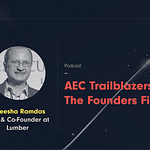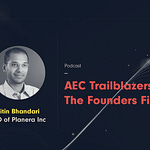What if your company’s drug test is measuring the wrong thing?
In this episode of AEC Trailblazers, Valentin Noves talks with Ken Fichtler, CEO of Gaize, about a critical blind spot in workplace safety—especially in high-risk industries like construction. While traditional drug tests detect chemical presence, they don’t measure impairment—and in a post-legalization world, that distinction matters more than ever.
Ken explains how Gaize’s AI-powered platform shifts the paradigm by analyzing eye movements and neurocognitive response to detect real-time impairment from cannabinoids, opiates, stimulants, and more. This allows construction firms and safety managers to move beyond legacy tests that can be unreliable, exclusionary, or even dangerously outdated.
“Chemical drug tests were built to detect what they were told to detect,” Ken notes. “If your test looks for heroin, it won’t find fentanyl. That’s a big problem when fentanyl is killing over 100,000 Americans a year.”
He also explains why THC detection is particularly flawed: “You can test positive for THC three weeks after using cannabis. But that doesn’t tell you if someone’s impaired right now. That’s why we focus on the body’s response, not residual presence.”
In this episode, Ken and Valentin dig into:
Why impairment—not chemical presence—is the future of safety
How Gaize detects synthetic cannabinoids and other hard-to-spot substances
Why OSHA’s data fails to reveal the root cause of incidents
How eye-tracking analysis creates a universal baseline across drug categories
The unique challenges of cannabis and drug use in blue-collar and trades workforces
Ken also shares startling stats: nearly 20% of Americans used cannabis last year, with much higher percentages in the trades and construction sectors. In a workforce where relationships and muscle memory are king, impairment testing has often been overlooked—but it’s now a critical piece of safety, compliance, and legal protection.
If you’re in AEC, construction safety, HR, or operations, this episode offers a new lens on an old problem—and a real solution for how to move forward.













Share this post